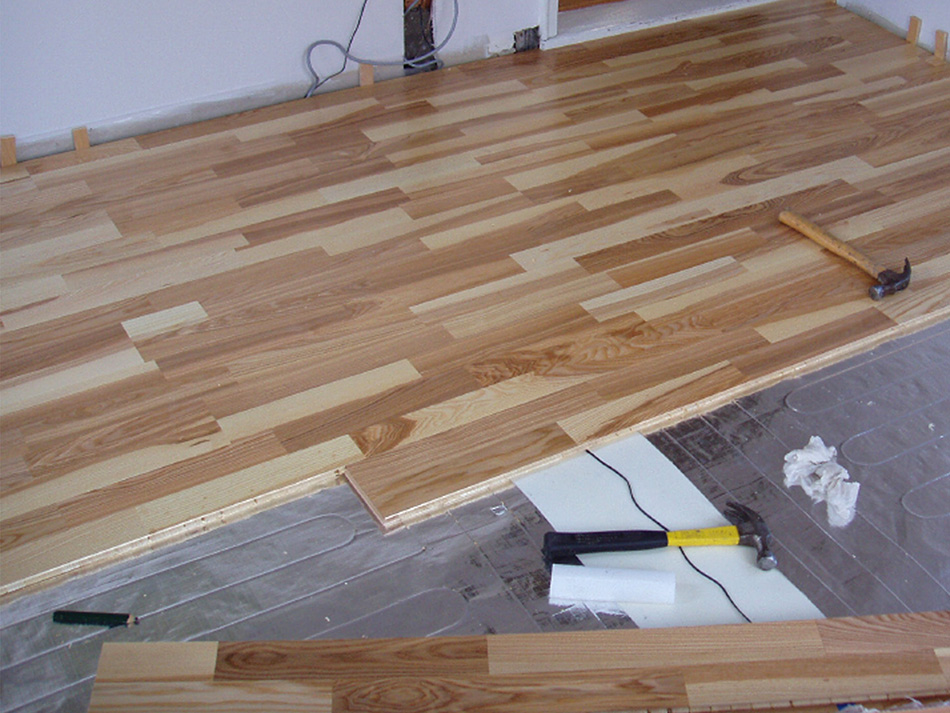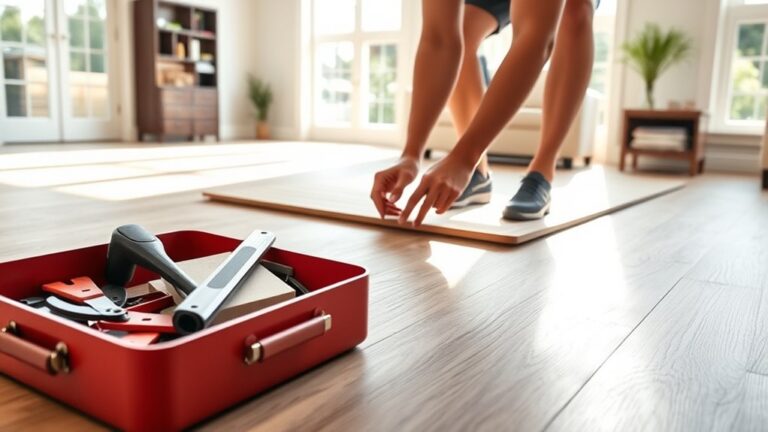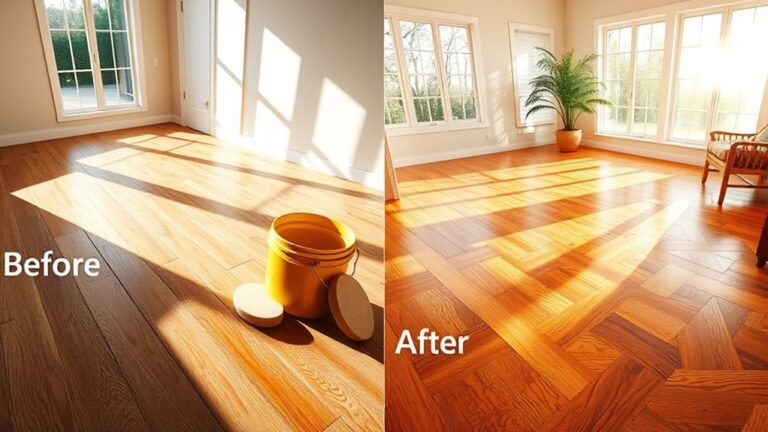The appropriate size spline for a 3/4 hardwood floor is 1/4 inch. Installing hardwood floors requires the use of a spline, a small strip of wood inserted into the groove of each floorboard to create a tight fit and ensure stability.
Finding the right size spline is crucial to the success of your flooring project. For a 3/4 inch hardwood floor, a 1/4 inch spline is the correct size to use. This ensures that the spline will fit snugly into the groove without causing any gaps or issues.
By choosing the correct size spline, you can ensure a professional and long-lasting installation for your hardwood flooring.
Proper Spline Size: Avoiding Common Mistakes
Properly selecting the correct spline size is crucial when installing a 3/4 hardwood floor. The spline size is the measurement of the space between the tongue and groove of the hardwood flooring. Choosing the wrong spline size can lead to issues such as gaps, squeaks, and uneven installation. There are several factors to consider when determining the appropriate spline size:
- Wood Species: Different species of hardwood have varying tongue and groove dimensions, hence requiring different spline sizes.
- Environment and Climate: The humidity and temperature of the installation area can affect the expansion and contraction of the flooring, necessitating specific spline dimensions.
- Installation Method: Whether you’re using glue-down, floating, or nail-down installation methods can impact the spline size choice.
- Manufacturer Recommendations: Following the recommendations provided by the hardwood flooring manufacturer is essential to ensure a proper fit and optimal performance.
By carefully considering these factors, you can avoid common mistakes and ensure a successful and durable installation of your 3/4 hardwood floor.
Measuring Hardwood Floors For Spline Size
When measuring hardwood floors for spline size, it is important to follow step-by-step instructions to ensure accurate measurements. Begin by gathering the necessary tools for measuring the hardwood floor thickness. These tools may include a tape measure, a caliper, or a ruler.
Start by measuring the thickness of the hardwood floor at various points across the room. This will help ensure that the measurements are consistent and representative of the overall thickness. Once the measurements are complete, calculate the average thickness by averaging the measurements taken at different locations.
With the average thickness determined, it is time to select the appropriate spline size. Spline refers to the strip of material used to fill the expansion gaps between hardwood floors. The size of the spline should match the average thickness of the hardwood floor to achieve a snug fit and maintain structural integrity.
By carefully measuring hardwood floors and selecting the correct spline size, you can ensure a seamless installation and preserve the longevity of your hardwood floors.
Finding The Perfect Spline Size
Choosing the correct spline size is crucial when installing a 3/4 hardwood floor. There are several spline sizing options available, and understanding them is essential to ensure a perfect fit.
The size of the spline should match the thickness of the hardwood floor. For a 3/4 hardwood floor, the most commonly used spline sizes are 3/8 and 1/2 inch. These sizes provide a secure and balanced connection between the floorboards.
Using a spline that is too small may result in an unstable floor, while a spline that is too large can cause stress on the floorboards and lead to gaps or cracks. It is important to measure the thickness of the hardwood floor precisely and choose the appropriate spline size accordingly.
By understanding the different spline sizing options available and matching the spline size to the hardwood floor thickness, you can ensure a successful and durable installation for your 3/4 hardwood floor.
Choosing The Right Spline Material
| Material | Pros | Cons |
|---|---|---|
| Wood | Natural look and feel | May expand or contract with humidity changes |
| Plastic | Durable and moisture-resistant | May not provide the same aesthetic appeal as wood |
| Metal | Strong and long-lasting | May be more expensive than other options |
| Composite | Combines the benefits of different materials | Can be less customizable |
When choosing the right spline material for your 3/4 hardwood floor, it’s important to consider the various materials available. Wood splines offer a natural look and feel but may be prone to expansion or contraction with changes in humidity. Plastic splines, on the other hand, are durable and moisture-resistant but may not provide the same aesthetic appeal as wood. Metal splines are strong and long-lasting, although they can be more expensive. Lastly, composite splines combine the benefits of different materials, but they may be less customizable. Consider your priorities in terms of aesthetics, durability, and budget when making your decision.
Installing The Spline: Diy Or Hire A Professional?
Deciding whether to install the spline for your hardwood floor yourself or hire a professional is an important consideration. Before making a decision, it’s essential to assess your skills and comfort level with installation tasks. If you have thorough experience with flooring projects and feel confident in your abilities, tackling the spline installation yourself can save you money. However, it’s crucial to note that spline installation requires precision and attention to detail to ensure a seamless transition between flooring types. If you lack the necessary expertise or tools, hiring a professional can guarantee a high-quality job and minimize the risk of costly mistakes. Additionally, professionals have the knowledge and experience to handle any unforeseen challenges that may arise during the installation process. Ultimately, weighing the benefits of hiring a professional, from expertise to a seamless installation, can help you make an informed decision tailored to your specific needs.
Step-by-step Guide To Spline Installation
To begin the spline installation for a 3/4 hardwood floor, ensure the subfloor is clean and level. Remove any debris, bumps, or unevenness by sanding or leveling the surface. It is crucial to acclimate the spline to the room’s temperature and humidity prior to installation. Next, measure and cut the spline to match the length of the groove between the hardwood boards. Make sure the spline is securely fitted without causing the boards to bow or gap. Properly align the hardwood floorboards, ensuring the spline is correctly positioned within the groove. Gently tap the spline into place using a rubber mallet or a block of wood to prevent damage. Repeat this process for each groove in the hardwood floor. Once the spline is firmly inserted into all the grooves, proceed with the rest of the flooring installation process.
Common Challenges And Troubleshooting Tips
Installing a spline for a 3/4 hardwood floor can bring about some common challenges. The first step is to identify any issues that may arise during the installation process. One common problem is the incorrect size of spline being used. To overcome this, it is crucial to determine the appropriate size for your specific hardwood floor. Another challenge is the improper fitting of the spline, causing gaps or misalignment. To troubleshoot this, ensure that the spline is cut accurately and fits snugly into the groove of the hardwood planks. Additionally, if the spline is damaged or worn, it may lead to instability and movement in the floor. To address this, it is recommended to replace the spline with a new one. By following these tips and tricks, you can overcome these challenges and successfully install a spline for your 3/4 hardwood floor, ensuring a smooth and stable result.
Maintenance And Care For Spline-fitted Hardwood Floors
When it comes to maintenance and care for spline-fitted hardwood floors, proper cleaning and regular maintenance are key. To ensure the longevity of your floors, it is important to follow some best practices.
Firstly, cleaning the floors regularly is essential to prevent the accumulation of dirt, dust, and debris. Use a soft broom or vacuum with a hardwood floor attachment to remove loose particles. Avoid using excessive water or harsh cleaning agents as they can damage the wood.
Secondly, avoid dragging heavy furniture or appliances across the floor to prevent scratches and dents. Use furniture pads or felt protectors under the legs of furniture to minimize the risk of damage.
Additionally, placing rugs or mats in high traffic areas can help protect the floor from wear and tear. This is especially important in entryways and hallways where dirt and grit are often tracked in.
In conclusion, regular care and maintenance are essential for spline-fitted hardwood floors. By following these best practices, you can prevent damage and extend the lifespan of your floors, keeping them looking beautiful for years to come.
Faqs: Answering Your Spline Size Questions
If the spline size doesn’t match the hardwood floor thickness, it can lead to various issues. If the spline size is too small, it may not provide enough support to hold the hardwood floor in place, causing shifting and instability. On the other hand, if the spline size is too large, it may create gaps or a raised floor surface, which can be both visually unappealing and a tripping hazard.
It is not recommended to use a larger or smaller spline size for the hardwood floor. The spline size is specifically designed to fit the corresponding hardwood floor thickness. Using a different size may compromise the structural integrity of the floor and can result in long-term problems.
It is important to carefully measure the thickness of your hardwood floor before purchasing a spline. This ensures that the correct size is selected, providing a secure and visually pleasing installation.

Frequently Asked Questions For What Size Spline For 3/4 Hardwood Floor
What Size Spline Is Used For 3/4 Hardwood Flooring?
The size of the spline used for 3/4 hardwood flooring typically depends on the width of the groove in the flooring. A 1/4 inch spline is commonly used for this purpose. However, it is always recommended to consult the manufacturer or a professional installer to determine the appropriate size for your specific flooring.
Why Is A Spline Used In Hardwood Flooring Installation?
A spline is used in hardwood flooring installation to ensure a secure and tight fit between the flooring planks. It is inserted into the groove of one plank and acts as a connector between adjacent planks, enhancing stability and preventing any movement or gaps between them.
This helps in maintaining the overall integrity and appearance of the floor.
Can I Use A Different Size Spline For My Hardwood Flooring?
It is not recommended to use a different size spline for your hardwood flooring. The size of the spline should match the width of the groove in the flooring for a proper fit and installation. Using a different size may compromise the stability and aesthetics of the floor, leading to potential problems in the long run.
How Do I Install A Spline In My Hardwood Flooring?
To install a spline in your hardwood flooring, first, ensure that the groove in the flooring is clean and free from debris or obstructions. Apply a thin layer of adhesive to the inside of the groove. Gently tap the spline into place using a rubber mallet, making sure it is flush with the surface of the flooring.
Trim any excess spline if necessary.
Conclusion
Choosing the right size spline for your 3/4 hardwood floor is essential to ensure a smooth and durable installation. By considering factors such as the size of the floorboards, the subfloor condition, and the installation method, you can determine the appropriate spline size.
Whether you opt for a 1/4 or a 1/2-inch spline, it’s crucial to plan ahead and consult with a professional if needed. With the proper size spline, you can achieve a seamless and long-lasting hardwood floor that will enhance the beauty of your space.




